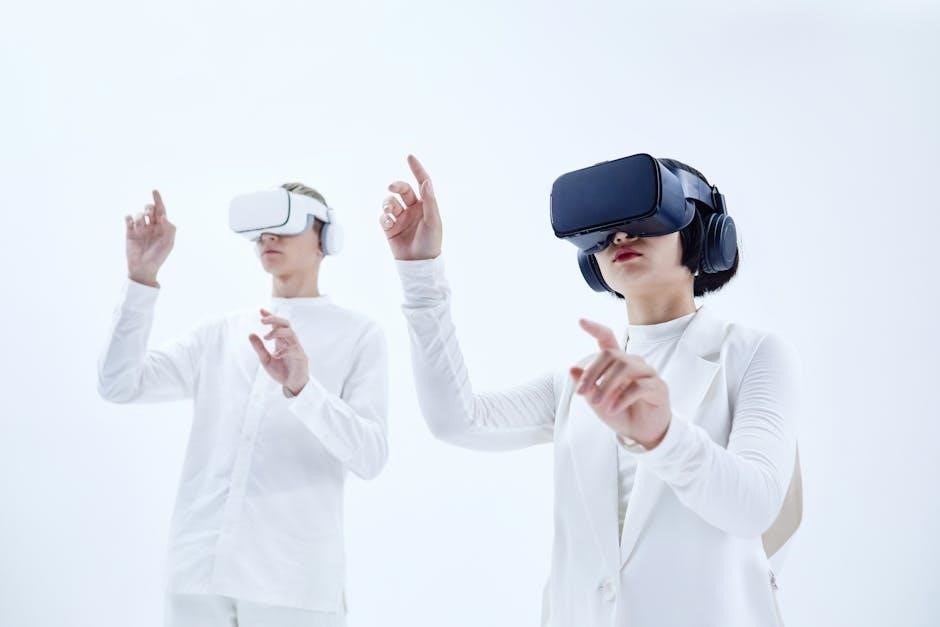
Simulacra and Simulation, a seminal work by Jean Baudrillard, explores the concept of hyperreality, where simulations of reality replace the real. The PDF version of this text is widely available online, offering insights into how modern society engages with representations of truth, challenging perceptions of authenticity and reality.
1.1 Definition of Simulacra and Simulation
Simulacra refers to copies or representations of reality that lack an underlying truth or original. Simulation is the process of generating these models, creating a hyperreal world where symbols and images replace authentic experiences. In the context of Simulacra and Simulation, Baudrillard argues that society has become saturated with these simulations, leading to the erosion of the real. The PDF version of his work delves into this concept, exploring its philosophical and cultural implications.
1.2 The Concept of Hyperreality
Hyperreality refers to a state where simulations and models of reality are indistinguishable from reality itself. In Simulacra and Simulation, Baudrillard argues that society has become dominated by these hyperreal constructs, such as media images and digital representations, which shape perceptions more powerfully than actual events. The PDF version of his work explains how hyperreality replaces authentic experiences, creating a world where the simulated overtakes the real, fundamentally altering human interaction and understanding.
1.3 The Relevance of Baudrillard’s Theory in Modern Society
Baudrillard’s theory of simulacra and simulation remains highly relevant in today’s digital age. The PDF version of his work highlights how social media, virtual reality, and consumer culture create hyperreal experiences. These concepts help explain phenomena like fake news, influencers, and digital identities, offering a critical lens to understand how modern society interacts with and perceives reality through mediated simulations, making his ideas essential for contemporary cultural and technological analysis.

Jean Baudrillard: The Philosopher Behind the Theory
Jean Baudrillard, a French philosopher and sociologist, is renowned for his postmodernist theories. His work, available in PDF, critiques modernity, capitalism, and consumer culture, influencing contemporary thought on reality and simulation.
2.1 Biography of Jean Baudrillard
Jean Baudrillard, a French philosopher and sociologist, was born on July 27, 1929, in Reims, France. Initially a Germanist, he later focused on sociology and philosophy. His academic career began at the University of Paris, where he taught sociology. Baudrillard’s work critiques modernity, capitalism, and consumer culture, gaining prominence in postmodernist thought. His writings, including Simulacra and Simulation, are widely available in PDF formats, influencing contemporary discourse on reality and simulation.
2.2 His Contributions to Postmodern Philosophy
Jean Baudrillard significantly shaped postmodern thought by introducing the concept of hyperreality, where simulations replace authentic experiences. His ideas challenged traditional notions of reality and truth, emphasizing the dominance of signs and symbols over tangible reality. Baudrillard’s work, particularly Simulacra and Simulation, is widely studied in PDF formats, offering insights into how contemporary society interacts with representations of reality, thus influencing postmodern philosophical discourse and cultural critique.
2.3 Key Works and Their Impact
Baudrillard’s Simulacra and Simulation is his most influential work, introducing concepts like hyperreality and the precession of simulacra. Available as a PDF, it critiques modern society’s reliance on simulations, arguing that they shape perceptions more than reality itself. This work has profoundly impacted cultural theory, sociology, and philosophy, offering a critical lens for understanding media, technology, and consumer culture in the postmodern era.

The Precession of Simulacra
The precession of simulacra refers to how models or simulations precede and shape perceptions of reality. Baudrillard argues that simulacra now define truth, making reality indistinguishable from its representations, as explored in his Simulacra and Simulation work, widely available as a PDF.
3.1 The Simulacrum and Its Relationship to Reality
The simulacrum, as Baudrillard explains, is a copy without an original, displacing reality with representations. In Simulacra and Simulation, he argues that simulacra do not reflect reality but replace it, creating a hyperreal world where simulations are indistinguishable from the real. The PDF version of his work delves into how these models shape perceptions, blurring the line between authentic experience and constructed illusion.
3.2 The Four Orders of Simulacra
Baudrillard identifies four orders of simulacra, tracing their evolution from direct copies of reality to fully detached models. The first order involves faithful representation, while the second reflects industrial mass production. The third order is governed by models and codes, and the fourth represents pure simulation, disconnected from reality; This framework, detailed in the Simulacra and Simulation PDF, illustrates how simulacra progress from reflection to total abstraction, shaping modern hyperreality.
3.3 The Role of Models in Shaping Reality
In Simulacra and Simulation, Baudrillard argues that models, rather than reflecting reality, actively shape it. These models, or simulacra, construct hyperreality by generating representations that replace authentic experiences. The PDF version of the text elaborates on how societal perceptions are influenced by these constructed models, which often mask the absence of a tangible reality. This concept underscores the power of abstraction in defining contemporary understanding of the world.
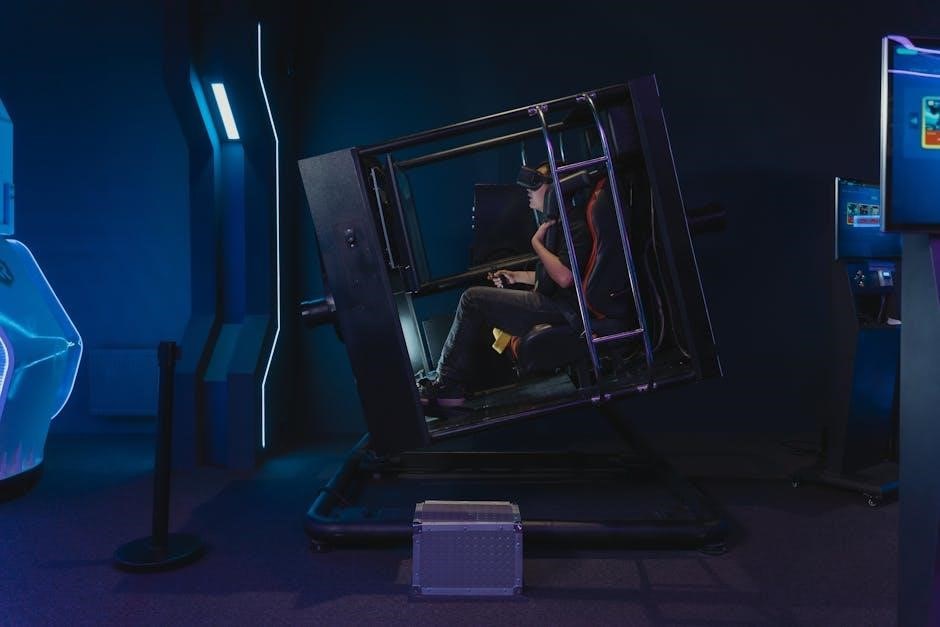
Society as a Simulacrum
Society is increasingly viewed as a simulacrum, where collective perceptions are shaped by models rather than genuine reality. Baudrillard’s theory highlights how simulations replace authentic experiences, creating a hyperreal world where the distinctions between truth and illusion blur significantly.
4.1 The Influence of Media and Technology
The proliferation of media and technology has deeply embedded simulacra into daily life, reshaping societal perceptions. Digital platforms and virtual realities propagate simulations, often masquerading as authentic experiences. Baudrillard’s theory underscores how these systems create hyperreal worlds, where the boundaries between reality and illusion dissolve. The widespread availability of Simulacra and Simulation PDF further highlights the relevance of these concepts in understanding contemporary culture and technology’s role in shaping reality.
4.2 Consumer Culture and the Commodification of Reality
Consumer culture drives the commodification of reality, transforming experiences into marketable simulacra. Goods and services are packaged as symbols of status, happiness, or identity, masking their lack of inherent meaning. The availability of Simulacra and Simulation PDF highlights Baudrillard’s critique of how capitalism perpetuates hyperreality, where consumption fuels the illusion of reality, further alienating individuals from authentic experiences and reinforcing systemic ideologies.
4.3 The Disappearance of the Real in Contemporary Life
Contemporary life is marked by the erosion of the real, as simulations and hyperreality dominate human experience. Media, technology, and consumer culture create layers of representation that obscure authentic reality. The Simulacra and Simulation PDF elaborates on how society substitutes symbolic representations for genuine experiences, leading to a world where the real is no longer distinguishable from its simulations, fostering alienation and a loss of authenticity in daily life.
The Implications of Living in a Hyperreal World
Living in a hyperreal world impacts culture, identity, and social structures. Simulacra and Simulation PDF highlights how simulations shape perceptions, eroding traditional values and replacing reality with models.
5.1 The Erosion of Traditional Values and Beliefs
Traditional values and beliefs are increasingly eroded in a hyperreal world. Baudrillard’s theory, as outlined in the Simulacra and Simulation PDF, suggests that simulations replace authentic cultural narratives, leading to a loss of meaning and a fragmented society. This shift fosters a reliance on constructed realities, diminishing the influence of historical and ethical frameworks that once shaped human behavior and thought.
5.2 The Impact on Identity and Self-Perception
Hyperreality profoundly shapes identity, as individuals increasingly define themselves through simulations. The Simulacra and Simulation PDF highlights how people curate personas, blurring the line between authentic selves and constructed identities. This fluidity fosters instability, as self-perception becomes tied to external models rather than intrinsic values, leading to a fragmented sense of self in a world dominated by representations.
5.3 The Transformation of Social Structures and Institutions
Hyperreality reshapes social structures, as simulations infiltrate institutions like media, politics, and education. The Simulacra and Simulation PDF reveals how these systems increasingly rely on models and images rather than tangible realities. This shift fosters a commodification of trust and authority, where legitimacy is derived from perception rather than substance. As a result, institutions lose their authentic functions, becoming mere reflections of their simulated ideals.
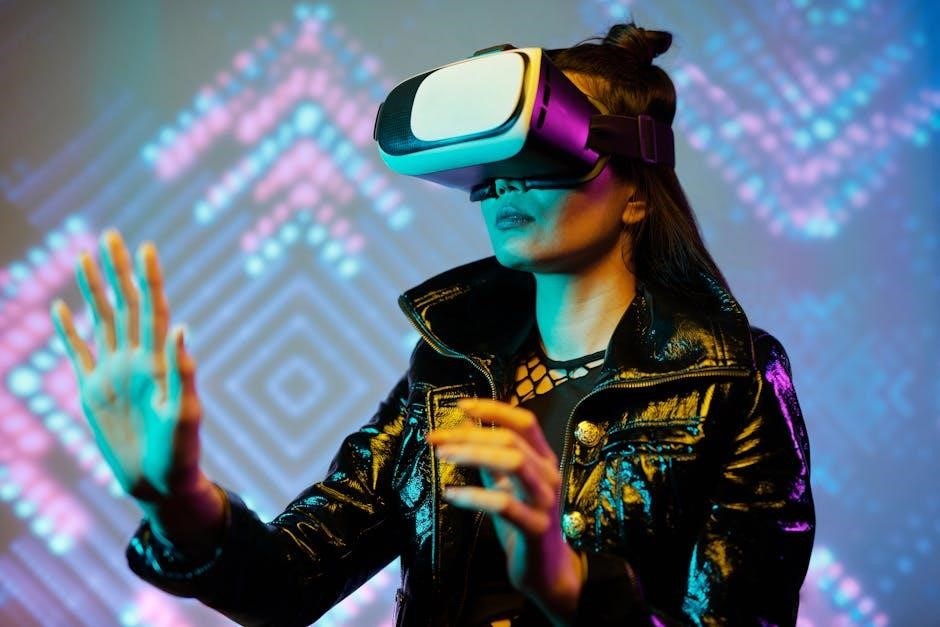
Case Studies: Simulacra in Everyday Life
Simulacra are evident in virtual reality, social media, and entertainment, where simulations of reality dominate. The PDF highlights how these platforms create hyperreal experiences, altering human interaction and perception.
6.1 Virtual Reality and Its Effects on Human Interaction
Virtual reality (VR) serves as a prime example of simulacra, creating immersive, hyperreal environments that alter human interaction. These simulations often replace authentic experiences, fostering a sense of detachment from reality. The PDF discusses how VR reshapes social dynamics, creating new forms of interaction that blur the lines between the physical and the virtual, leading to a reevaluation of human connection in a hyperreal world.
6.2 The Role of Social Media in Creating Simulacra
Social media platforms exemplify the creation of simulacra by fostering hyperreal identities and interactions. Users curate idealized versions of themselves, often blurring the line between authenticity and performance. Algorithms amplify this by creating personalized feeds that distort real-world events. The PDF highlights how social media’s simulacra reshape perceptions, leading to a detachment from tangible reality and fostering a culture of virtual connectivity that often supplants genuine human interaction.
6.3 The Simulation of Reality in Entertainment and Politics
Entertainment and politics thrive on simulacra, creating hyperreal experiences that often overshadow reality. Reality TV and political campaigns use staged scenarios to manipulate perceptions, fostering a culture of illusion. Media amplifies these simulations, making them central to public discourse. The PDF explores how such simulations blur the line between authenticity and fabrication, reshaping societal understanding and engagement with the world. This dynamic underscores Baudrillard’s theory of hyperreality, where the simulated becomes indistinguishable from the real.
The Intellectual Context of Baudrillard’s Work
Baudrillard’s work is deeply rooted in Marxism, poststructuralism, and semiotics, influencing his analysis of simulacra. His theories reflect engagements with thinkers like Marx, Foucault, and Saussure, shaping his critique of modern society and hyperreality, as detailed in the PDF versions of his writings.
7.1 Influences from Marxism and Poststructuralism
Baudrillard’s work is rooted in Marxist critiques of capitalism and poststructuralist theories of language and power. Marxism influenced his analysis of consumer culture, while poststructuralism shaped his views on signs and reality. Thinkers like Foucault and Saussure inspired his exploration of how simulations replace the real, forming the foundation of his theory of hyperreality, as outlined in the PDF versions of his writings.
7.2 Connections to the Ideas of Other Philosophers
Baudrillard’s theory of simulacra and simulation intersects with philosophers like Foucault, Deleuze, and Lyotard. Foucault’s power-knowledge dynamics and Deleuze’s notions of desire and simulacra influenced Baudrillard’s ideas. Similarly, Lyotard’s concept of the postmodern condition aligns with Baudrillard’s hyperreality, as both critiques challenge traditional notions of truth and reality. These connections are explored in the PDF versions of his work, highlighting his place within broader philosophical discourse.
7.3 The Evolution of His Thought Over Time
Baudrillard’s ideas evolved significantly, shifting from Marxist critique to postmodern theory. Early works focused on consumer culture, while Simulacra and Simulation introduced hyperreality. His later writings explored themes like globalization and virtual reality, refining his concepts. The PDF versions of his texts reveal this intellectual journey, showcasing how his theories adapted to technological and societal changes, solidifying his influence on contemporary philosophy and cultural studies.

Criticisms and Debates Surrounding Simulacra and Simulation
Baudrillard’s theory has sparked debates, with critics arguing his ideas are overly pessimistic and lack empirical support. The PDF discussions highlight concerns about his rejection of objective reality, questioning the practicality of his concepts in understanding society.
8.1 Arguments Against Baudrillard’s Theory
Critics argue that Baudrillard’s theory oversimplifies complex social structures, dismissing material realities. Some claim his concepts of hyperreality and simulacra lack empirical grounding, making them difficult to apply practically. Others suggest his rejection of objective truth undermines critical analysis. These arguments highlight the challenges in reconciling Baudrillard’s philosophical framework with tangible societal issues.
8.2 The Limitations of the Concept of Hyperreality
The concept of hyperreality, central to Baudrillard’s theory, has been criticized for its vagueness and lack of clear boundaries. Critics argue that it fails to distinguish between different levels of simulation, reducing complex realities to simplistic binaries. Additionally, the notion of hyperreality does not account for agency or resistance, overlooking how individuals actively engage with and reinterpret simulated environments. These limitations hinder its applicability across diverse contexts.
8.3 The Relevance of the Theory in the Digital Age
Baudrillard’s theory of hyperreality remains highly relevant in the digital age, where virtual realities and social media dominate. The PDF version of Simulacra and Simulation highlights how digital platforms create immersive simulations, blurring the lines between the real and the virtual. This resonance is evident in discussions about AI, deepfakes, and online personas, underscoring the enduring relevance of Baudrillard’s ideas in understanding contemporary culture and technology.

The Legacy of Simulacra and Simulation
Baudrillard’s work has profoundly influenced cultural theory, inspiring new perspectives in art, film, and philosophy. The PDF version of Simulacra and Simulation continues to be a vital resource for scholars and researchers, ensuring its enduring impact on contemporary thought and academic discourse.
9.1 The Impact on Cultural and Social Theory
Simulacra and Simulation has reshaped cultural and social theory by introducing the concept of hyperreality. The PDF version of Baudrillard’s work circulates widely, influencing scholars to reevaluate how society interacts with simulated realities. His ideas challenge traditional notions of authenticity, offering fresh perspectives on media, consumption, and identity. This has made the text a cornerstone in postmodern thought, fostering critical discourse across disciplines and generations.
9.2 The Influence on Art, Film, and Literature
Simulacra and Simulation has profoundly influenced art, film, and literature by inspiring explorations of hyperreality. The PDF version of Baudrillard’s work has inspired creators to depict virtual realities and question authenticity. Films like The Matrix and literary works by authors such as Don DeLillo reflect these ideas. The digital format of the text has further democratized its reach, fostering new interpretations and artistic expressions that challenge perceptions of reality and simulation.
9.3 The Continued Relevance of Baudrillard’s Ideas
Baudrillard’s concepts remain highly relevant in today’s hyperconnected world. The PDF version of Simulacra and Simulation continues to circulate widely, offering insights into how digital technologies and social media create simulated realities. His theories on hyperreality resonate with contemporary issues like deepfakes, virtual influencers, and the commodification of online identities, ensuring his work remains a vital lens for understanding modern society’s relationship with technology and reality.

The PDF Version of Simulacra and Simulation
The PDF version of Jean Baudrillard’s Simulacra and Simulation, translated by Sheila Faria Glaser, is widely available online. It includes the full text, enabling easy access to Baudrillard’s exploration of hyperreality and simulacra.
10.1 The Availability of the PDF Online
The PDF version of Simulacra and Simulation is readily accessible online, available through various academic platforms, libraries, and online repositories. Users can easily download or view the document, ensuring widespread accessibility to Baudrillard’s critical analysis of hyperreality and its societal implications.
10.2 The Content and Structure of the PDF
The Simulacra and Simulation PDF includes the full text of Baudrillard’s work, translated by Sheila Faria Glaser. It features chapters like “The Precession of Simulacra” and discussions on hyperreality, simulacra, and their societal implications. The document is well-structured, with clear sections and references, making it a valuable resource for understanding Baudrillard’s critical analysis of modern reality and its simulations.
10.3 The Benefits and Drawbacks of the Digital Format
The digital Simulacra and Simulation PDF offers convenient access and portability, enabling readers to engage with Baudrillard’s ideas anytime. However, the lack of physical interaction and potential eye strain from screen reading are drawbacks. Additionally, digital formats may lack the depth of critical annotations found in print versions, which can limit deeper analysis for some scholars.
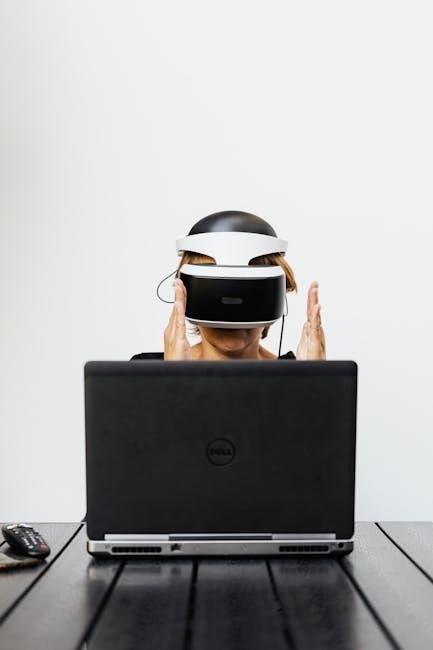
Further Reading and Resources
Explore secondary literature, online courses, and academic journals to deepen your understanding of Simulacra and Simulation. These resources provide critical analyses and contemporary perspectives on Baudrillard’s theories.
11.1 Recommended Secondary Literature
Notable works like Theories of Hyperreality and Baudrillard and the Media offer in-depth analyses of Simulacra and Simulation. These texts provide critical perspectives on Baudrillard’s concepts, exploring their relevance in contemporary culture and technology. Additional readings include Postmodern Theory by Steven Best and Douglas Kellner, which contextualizes Baudrillard’s ideas within broader philosophical frameworks. These resources are essential for a comprehensive understanding of hyperreality and its implications.
11.2 Online Courses and Lectures on the Topic
Online platforms like Coursera and edX offer courses exploring Baudrillard’s concepts, such as hyperreality and simulacra; Lectures on YouTube and academic websites delve into the implications of simulation in modern society. These resources provide accessible insights into Baudrillard’s theories, making complex ideas more digestible for a broader audience. They are invaluable for those seeking to understand the intersection of philosophy and contemporary culture.
11.3 Relevant Journals and Academic Publications
Scholarly journals like Cultural Studies and Philosophy Today regularly feature analyses of Baudrillard’s work. Publications such as Simulacra and Simulation are often discussed in academic circles, with critiques and interpretations available in various PDF formats. These resources provide deeper insights into Baudrillard’s theories, offering both supportive and critical perspectives. They remain essential for understanding the philosopher’s influence on contemporary thought and cultural critique.
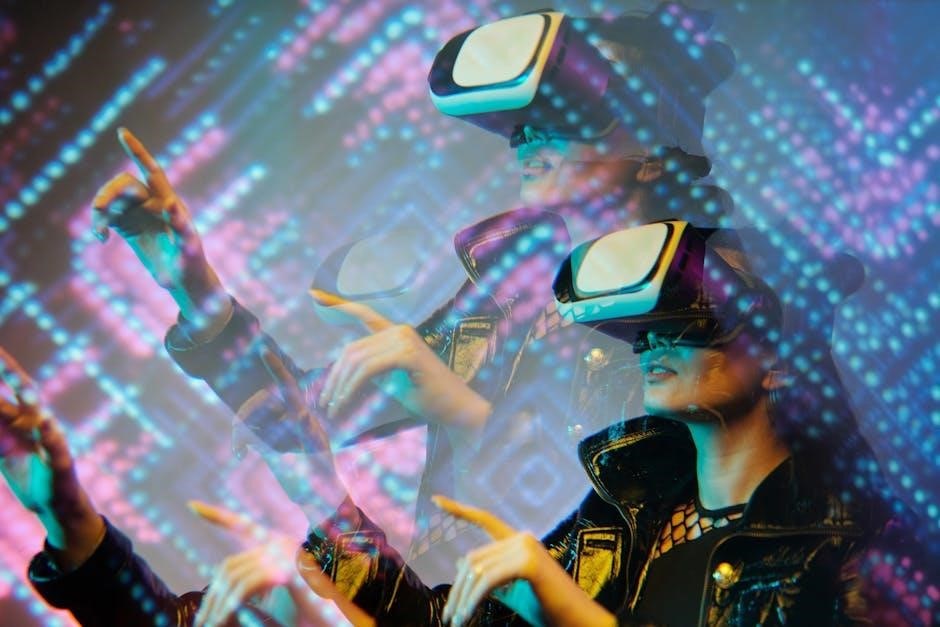
Final Thoughts on Simulacra and Simulation
Simulacra and Simulation remains a pivotal text in understanding hyperreality. The PDF version ensures Baudrillard’s ideas are accessible, offering insights into how simulations shape modern perceptions of reality and culture.
12.1 The Importance of Understanding Hyperreality
Understanding hyperreality is crucial in today’s digital age, where simulations dominate perceptions. Baudrillard’s concept highlights how media and technology create layers of reality, often obscuring the truth. Recognizing this helps individuals critically engage with information and Question the authenticity of experiences in a world where simulations increasingly shape culture, identity, and interactions. This awareness fosters a deeper understanding of modern society’s complexities and challenges.
12.2 The Challenges of Navigating a Simulated World
Navigating a simulated world presents significant challenges, as hyperreality blurs the line between truth and illusion. Individuals face difficulty distinguishing genuine experiences from constructed ones, leading to disorientation and confusion. The pervasive influence of media and technology exacerbates this issue, creating a reality where simulations often overshadow the real. This challenges individuals to develop critical awareness and discernment to maintain a grasp on authenticity in a world dominated by hyperreal constructs.
12.3 The Potential for Resistance and Authenticity
Resistance to hyperreality lies in reclaiming authenticity through critical engagement and self-awareness. By questioning simulations and seeking genuine connections, individuals can challenge the dominance of hyperreal constructs. Authenticity emerges when people prioritize meaningful experiences over illusionary ones, fostering agency and truth in a world saturated with simulacra. This resistance requires intentional reflection and a commitment to uncovering reality beneath the layers of simulation.